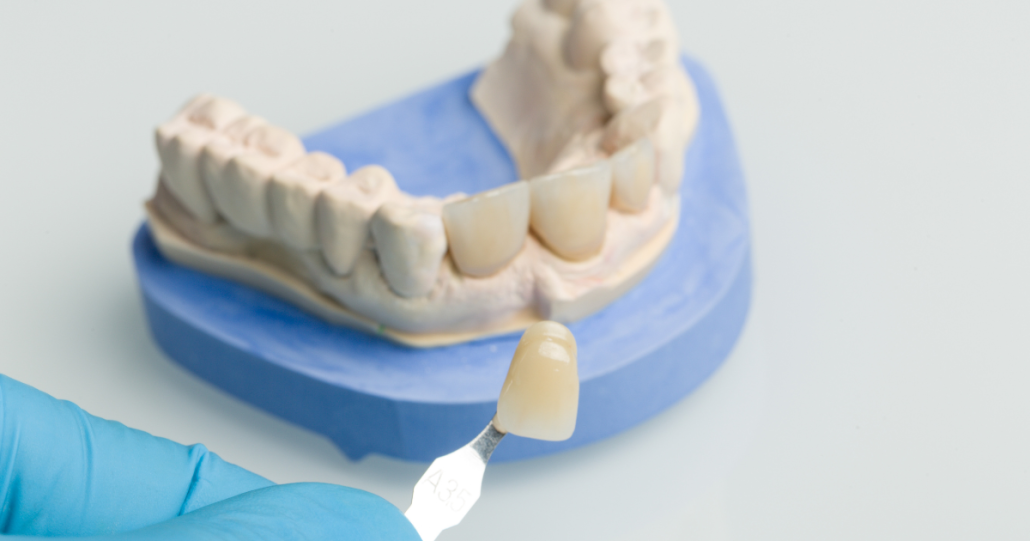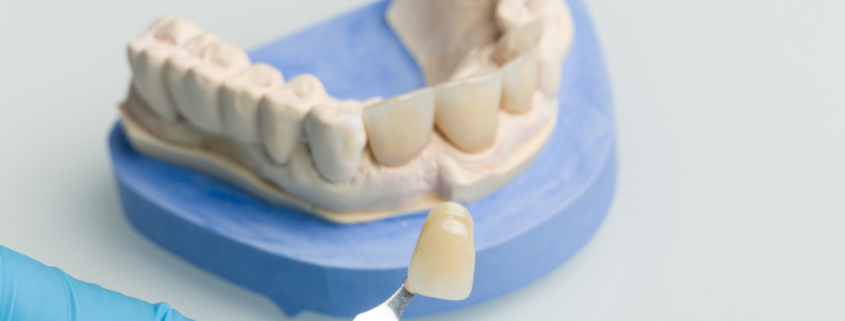Veneers Vs. Braces – Unraveling the Dental Dilemma
In the early days, the wire used in traditional braces was made from gold, so, of course, only the elite could afford them. Then, NASA developed a metal alloy called nickel-titanium which changed the game for dentistry. From then on, people in all income brackets could afford them.
In this article, you can learn more about veneers vs. braces and what factors to consider when making this life-changing decision. Choosing cosmetic dentistry will significantly impact your life, both positive and negative, so ensure you discuss your circumstances with a dental expert first.
Veneers are thin pieces of porcelain or composite resin that are custom-made to fit over your teeth. This option is often chosen by people looking for a quick and effective way to significantly improve the cosmetic appearance of their teeth. However, veneers are not designed to correct significant orthodontic problems like braces do. Now let’s take a deeper look at the differences between these two dental treatments in the table below:
| Veneers | Braces |
|---|---|
| Aesthetically pleasing | Visible and sometimes uncomfortable |
| Quick solution for cosmetic dentistry | Long-term solution for orthodontic issues |
| Cannot fix severe dental issues | Can correct serious misalignments and malocclusions |
| Potentially more expensive | More affordable with various options |
Contents
Veneers
What are Veneers?
Dental veneers are custom shells that attach to the surface of damaged teeth. Over time, teeth can deteriorate in strength, shape, and color, affecting someone’s smile and confidence. Dental veneers are made from porcelain or composite and are glued to the enamel to restore the teeth.
Benefits of Veneers
There are many options when it comes to improving your smile, such as implants, but veneers remain the most popular choice. The reason is that veneers are quick and affordable; they can also straighten your teeth and protect them in only a few dentist visits.
Types of Veneers
Dental veneers are available in various types, such as composite veneers, porcelain veneers, no-prep veneers, and removable veneers. Porcelain covers severe imperfections, while composite veneers smooth out teeth.
Veneer Drawbacks
The downside of dental veneers is that it is an irreversible procedure. To fit the veneers, the dentist will need to shave off some of the enamel on the front of the tooth, meaning you must commit to the procedure.

Braces
What are Braces?
Braces remain the best way to correct crooked or misaligned teeth. Traditional braces are small metal brackets that attach to the front of the teeth. Metal bands are placed around molars at the back, and a wire runs through the brackets. This wire can be tightened to straighten the teeth.
Benefits of Braces
Crooked or misaligned teeth affect the smile and bite; it can also affect health and well-being. Braces are a non-invasive orthodontic procedure that corrects misaligned teeth in a few years. Unlike veneers, braces are an organic process to move your teeth into a new natural position.
Types of Braces
Something that deters people from choosing braces is their smile and appearance after they are fitted. Although traditional braces are effective, they are quite visible in the mouth; but there are alternative types of braces. Ceramic braces and clear aligners are popular options these days.
Treatment Process
An orthodontist referral sets you on this path. They’ll create a detailed cast of your mouth – a blueprint of your current smile. Sometimes, a few teeth may need to be removed to make room for the new residents. Upon adding the brackets with a firm tightening of the wire, your transformation begins. Remember, it’s a marathon, not a sprint – expect some visits along the way.

Comparing Veneers and Braces
Which is Better?
Veneers and Braces each have advantages and disadvantages that you can discuss with your orthodontist. In short, veneers are a faster way to achieve results; the downside is the damage caused to the enamel. On the other hand, braces provide long-term results with more integrity.
The cost of veneers is typically higher than the cost of braces. Veneers can cost anywhere from $500 to $2,500 per tooth, depending on the material used and the complexity of the procedure. In contrast, braces can cost between $3,000 and $10,000, depending on the type of braces and the length of treatment.
Veneers are considered a cosmetic procedure and are not typically covered by insurance. Braces, on the other hand, may be partially covered by insurance, depending on the type of plan and the reason for treatment.
Conclusion
Both veneers and braces serve as cosmetic treatments with the aim of ameliorating your smile and overall dental health. However, they present distinct attributes that need to be carefully considered. Veneers may be viewed as a quick fix and a more pocket-friendly option compared to braces, but braces edge out with their non-invasive nature and long-term benefits.
Before coming to a decision, it’s imperative to hold a discussion with a professional orthodontist. Both treatments come with their own set of advantages and downsides, and the ultimate goal is to ensure that the choice you make leads to the best possible outcome for you.
Sources:
https://www.mdpi.com/2306-5354/10/2/168
https://www.webmd.com





Leave a Reply
Want to join the discussion?Feel free to contribute!